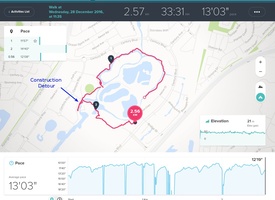Took a bit over 30 mins to do the walk and we briefly stopped to look at the steam locomotives outside the entrance to Intaka Island, and afterwards went through to the Waterfront to look at the holiday crowds....

-
The grain silo building in 2009

-
The old Waterfront Grain Silos as they appear today after being restored for modern use - you can clearly see the old appearance was faithfully kept

-
The old Waterfront Grain Silos as they appear today after being restored for modern use - you can clearly see the old appearance was faithfully kept

-
Housing around Intaka Island

-
Inside Intaka Island - the history of the steam train. In the foreground is a model of a Rhodesia Railways 19th Class Locomotive built by George William Binns-Ward

-
Entrance to the Intaka Island bird wildlife sanctuary next to Canal Walk - note the wind generator to the righ

-
SAR NGG16 Garatt Locomotive No 112 built in 1939 by Beyer Peacock and used in KwaZulu-Natal on the Ixopo line to 1977

-
SAR NGG16 Garatt Locomotive No 112 built in 1939 by Beyer Peacock and used in KwaZulu-Natal on the Ixopo line to 1977

-
SAR NGG16 Garatt Locomotive No 112 built in 1939 by Beyer Peacock and used in KwaZulu-Natal on the Ixopo line to 1977

-
Douglas Colliery No 3 Steam Engine built in Glasgow and delivered in 1904 and worked in the Wits mines in South Africa

-
Douglas Colliery No 3 Steam Engine built in Glasgow and delivered in 1904 and worked in the Wits mines in South Africa

-
Douglas Colliery No 3 Steam Engine built in Glasgow and delivered in 1904 and worked in the Wits mines in South Africa

-
Lovely water effect between the complexes

-
Some beautiful views and houses around the Northern side of the island

-
Some beautiful views and houses around the Northern side of the island... you can see Table Mountain in the distance too

-
Leisurely walk around the island took just over 30 mins

0 comments
Add a comment